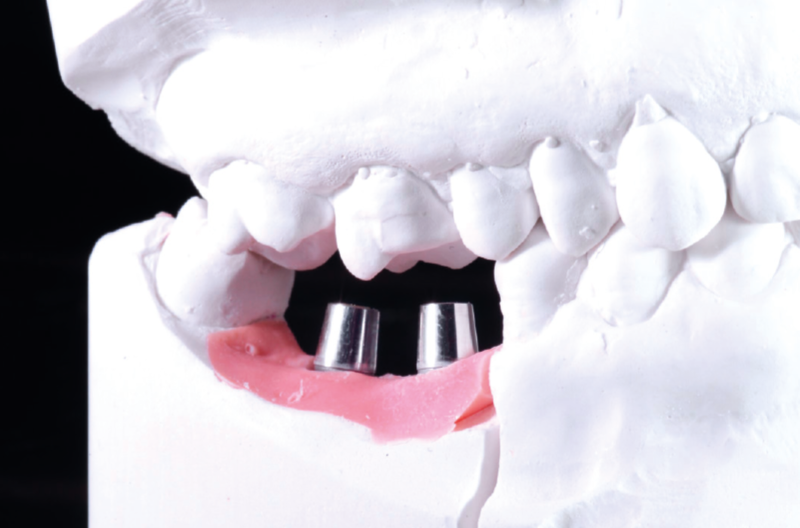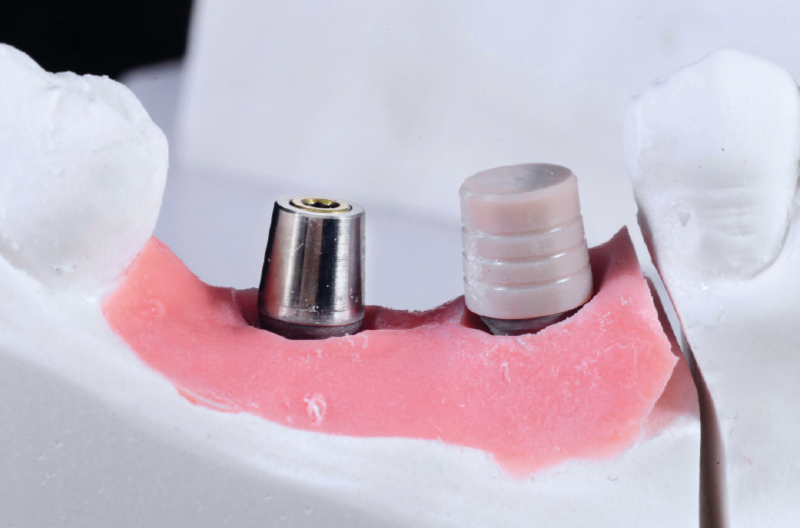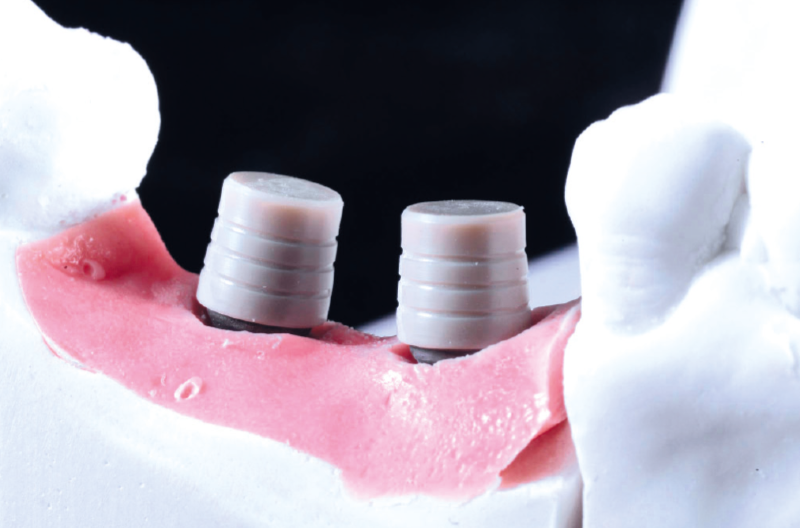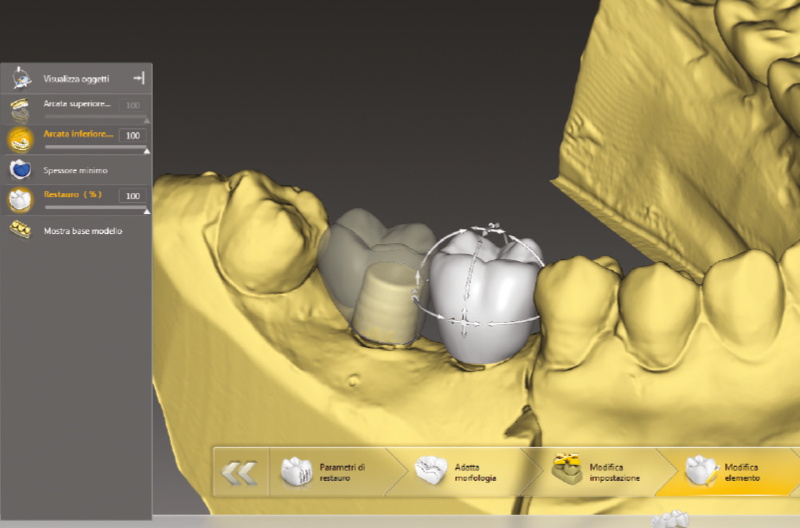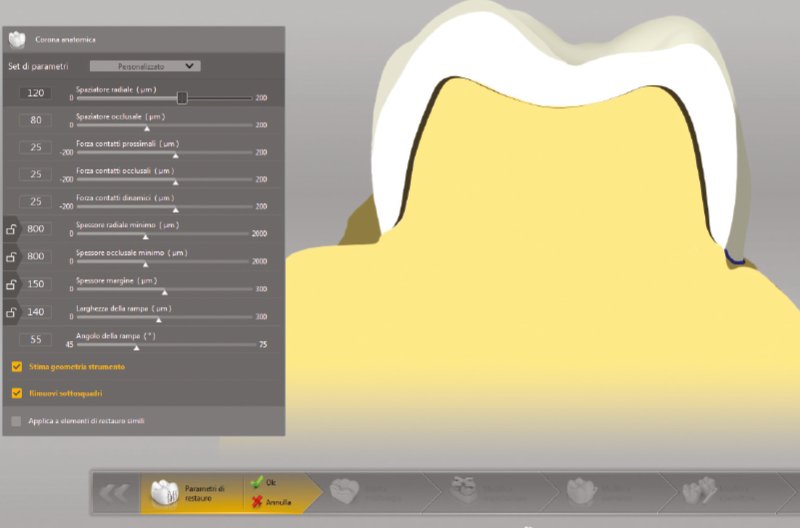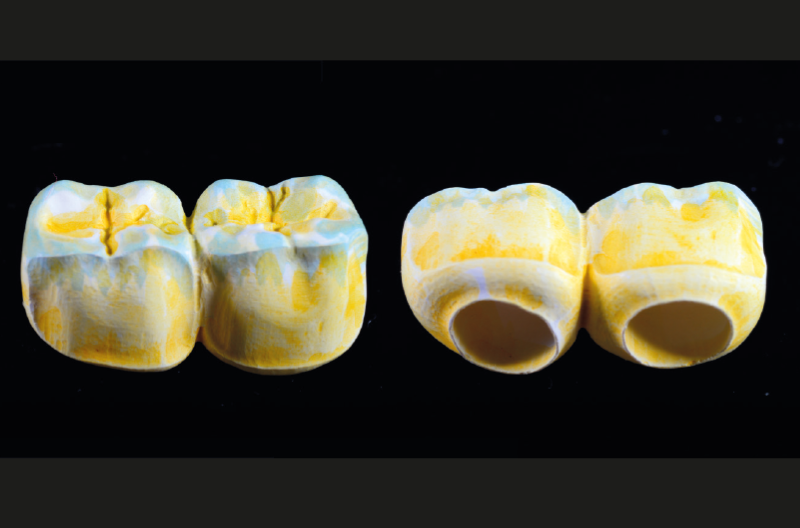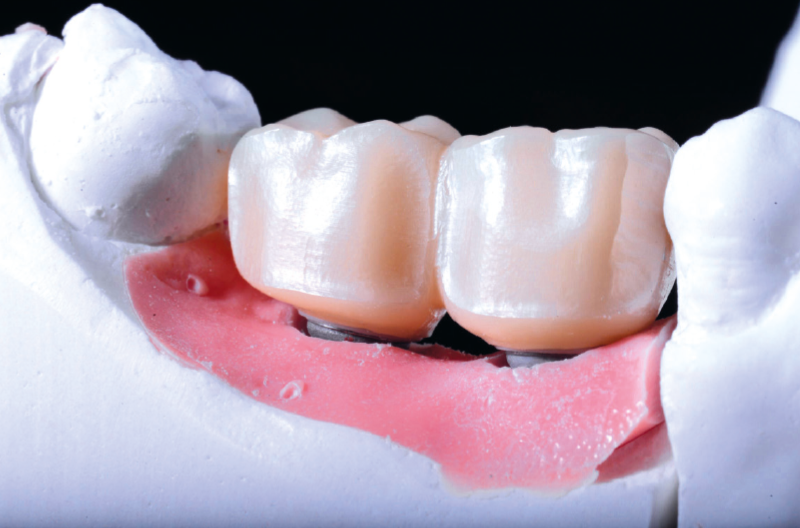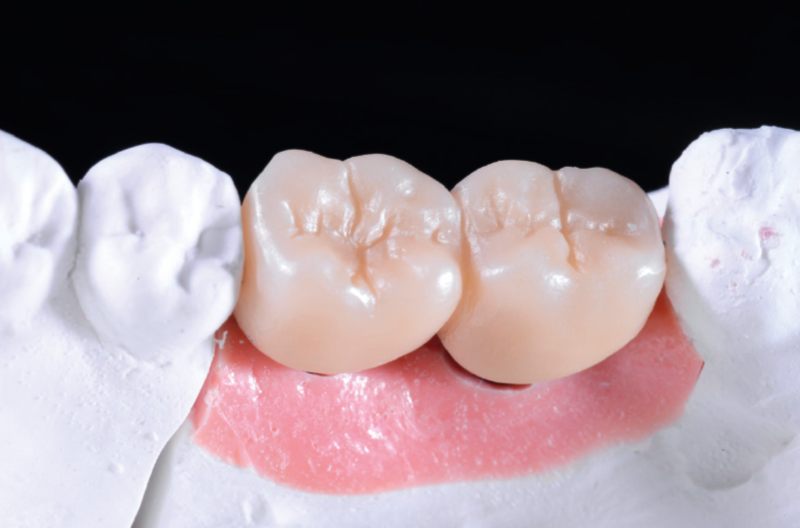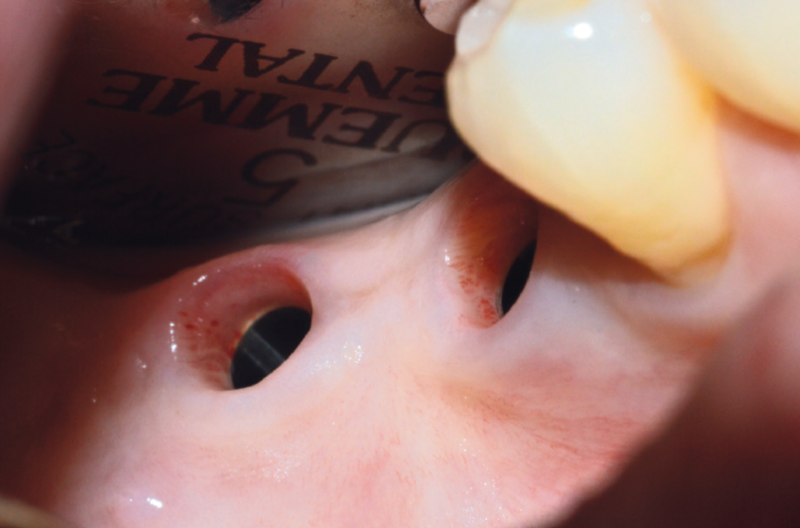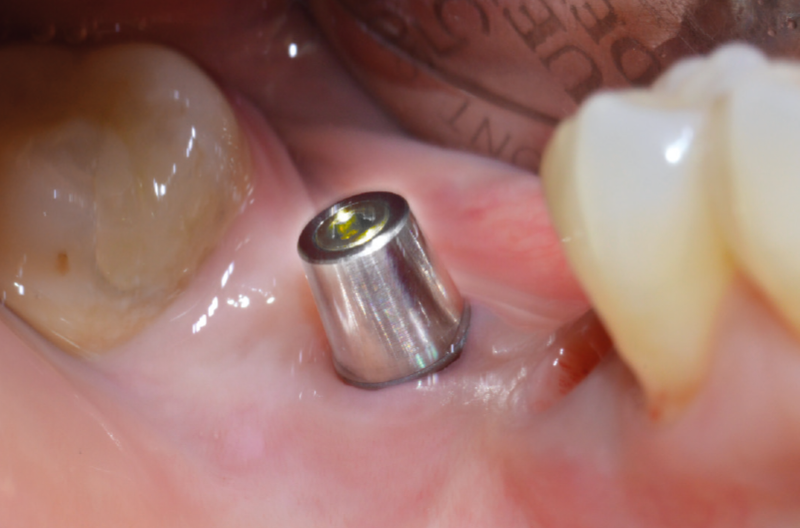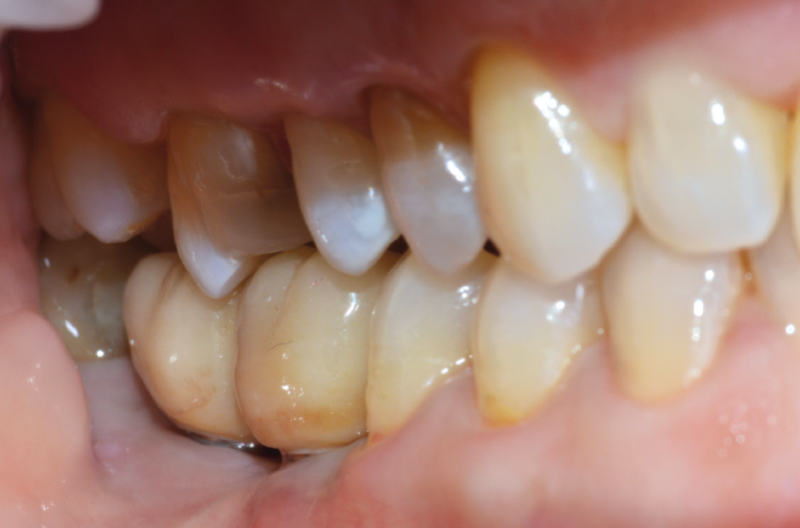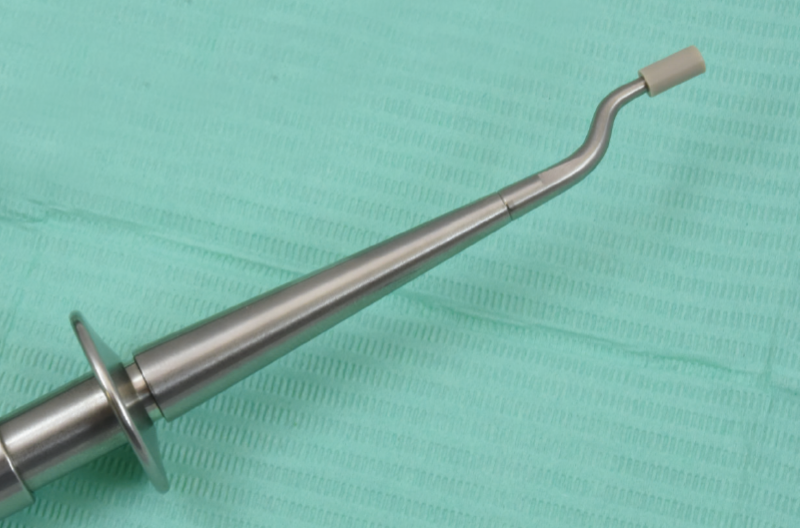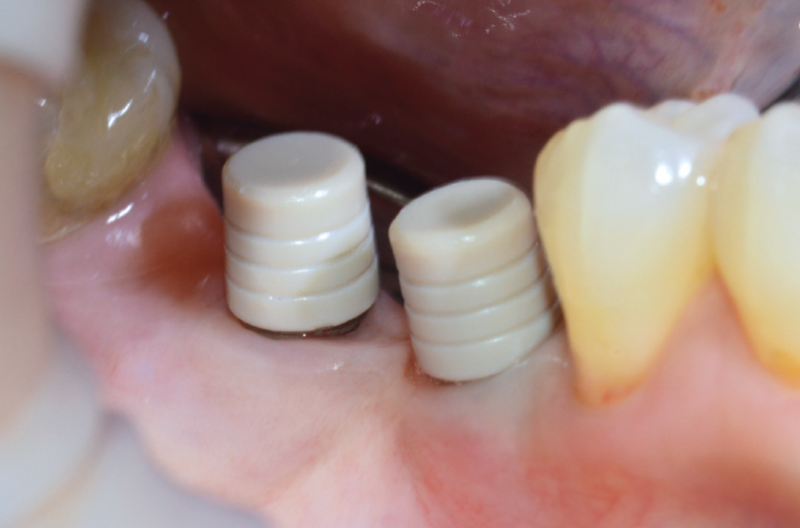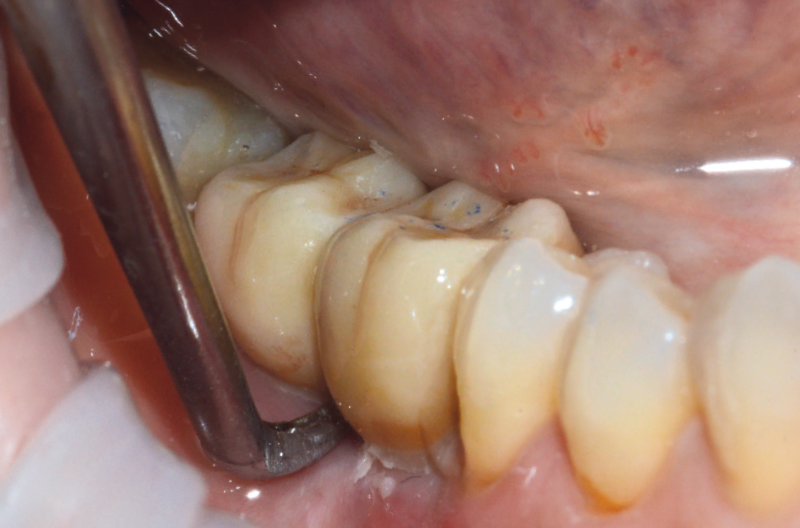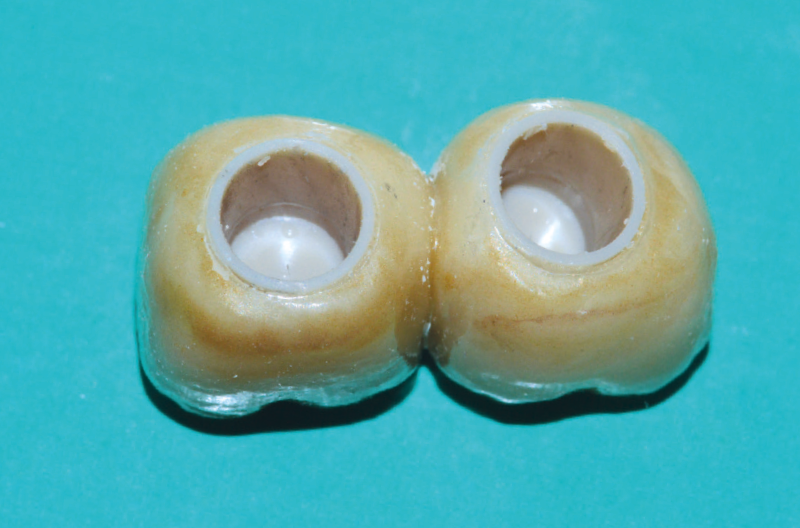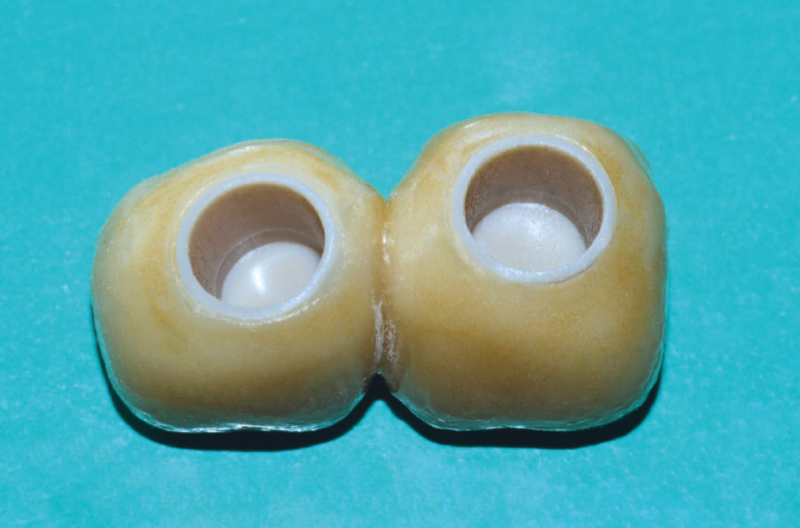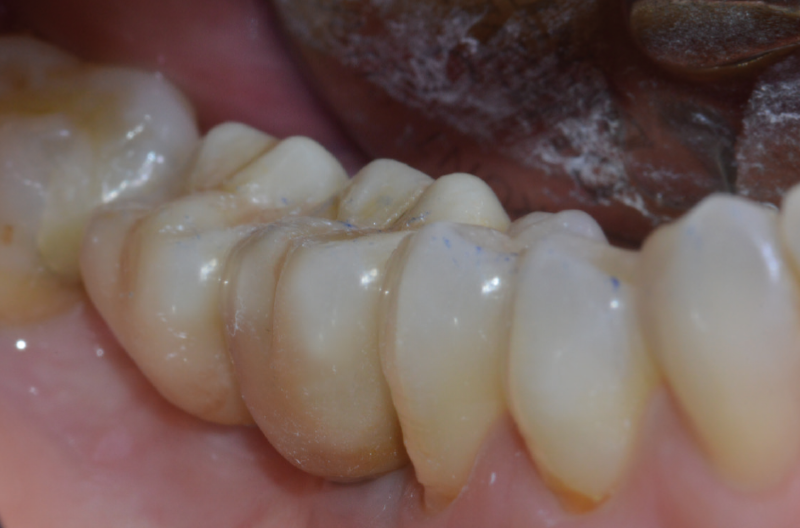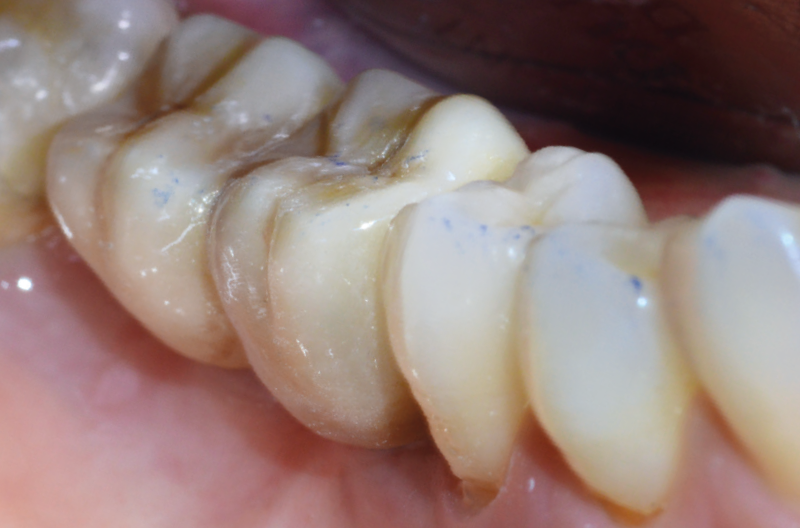Surgeons/Restorative dentists:
Dr. Stefano Pucci – Florence, Italy
This case report illustrates the clinical and laboratory procedures for the restoration of two mandibular posterior Ø 4,1 mm Classix implants with a fixed bridge which uses conometric friction retention instead of screws or cement. The friction retention is obtained through titanium abutments (MUA-Conics) with a 5-degree (half angle) tapered top and preformed conometric caps, made of PEEK, with an internal connection with the same taper angle, that are fixed within the bridge.
XCN® conometric-retained bridges help to save time during check-ups: the bridge can be removed and repositioned in seconds. There are no screws which have to be unscrewed or can break, no screw access holes to open and to close. Passivity is always guaranteed as conometric caps are intraorally incorporated within the bridge. Once done, the bridge is taken out of the mouth and excess cement removed. The perfectly cleaned and polished bridge is replaced in the mouth reducing the risk of biological complications. Fixed conometric-retained prosthesis can also be fabricated in case of non-parallel implants thanks to straight and angled (7,5° – 15° – 25° – 35°) abutments in 4 different gingival heights with no limits on positioning (XCN® 360° connection).

Ø 4.1 mm Classix implants with GH 5 mm Standard healing caps 
Implant Level impression was taken with yellow GH 5 Standard transfers 
Dental cast after implant-level impression: two GH 1.5 mm straight MUAs were selected and properly tapped into the analogs 
Conic adapter used to convert MUA into conometric abutment (MUA-Conic) 
Conic adapters screwed onto MUAs to convert into MUA-Conics 
Conic adapters tightened by means of the lab torque screwdriver 
Evaluation of the spaces with the antagonist 
Fixed caps placed with decisive manual pressure on MUA-Conics 
Fixed caps placed with decisive manual pressure on MUA-Conics 
Scanning process 
CAD project of the prosthesis; space of at least 120 microns for cementation to ensure a good passivity 
CAD project of the prosthesis; space of at least 120 microns for cementation to ensure a good passivity 
Bridge made of pre-coloured zirconia HT before sintering 
Sintered zirconia bridge 
Try-in of the bridge on the dental cast 
Try-in of the bridge on the dental cast 
Finished bridge with ceramic on outside facing and monolithic occlusal colouring 
Finished bridge with ceramic on outside facing and monolithic occlusal colouring 
Finished bridge with ceramic on outside facing and monolithic occlusal colouring 
Finished bridge with ceramic on outside facing and monolithic occlusal colouring; Note: Fixed caps are not yet cemented within the bridge, the dentist will do it intraorally 
View of clinical situation after removal of healing caps 
Try-in of MUA-Conics, Fixed caps and conometric bridge without activating the connections 
Try-in of MUA-Conics, Fixed caps and conometric bridge without activating the connections 
Try-in of MUA-Conics, Fixed caps and conometric bridge without activating the connections 
Try-in of MUA-Conics, Fixed caps and conometric bridge without activating the connections 
MUA-Conics properly tapped into the implants 
Abutment seater with offset PEEK tip used to tap the abutments into the implant and to seat the Fixed caps with a gentle tapping force on the abutments 
Fixed conometric caps properly tapped onto MUA-Conics 
The bridge was cemented with Multilink Hybrid Abutment on the Fixed caps. In order to remove the conometric bridge, with the PEEK tip a gentle tapping force is applied laterally on the bridge and a crown remover was used 
Conometric bridge after removal: note cement residues 
Conometric bridge finished and polished 
Bridge replaced in the mouth: the patient was asked to bite down on a cotton roll in order to reactive the conometric retention 
Control of contact points with articulating paper 
Control of contact points with articulating paper
Laboratory:
Massimiliano Pisa, Dental Giglio – Florence, Italy








